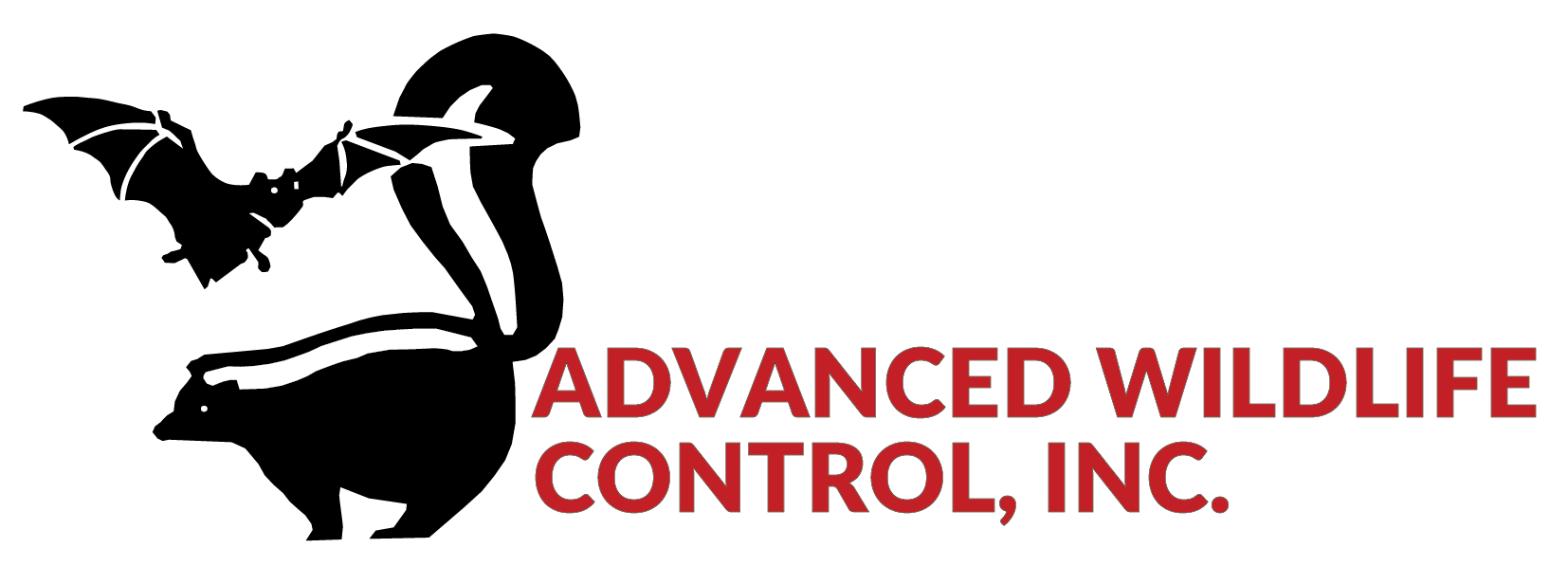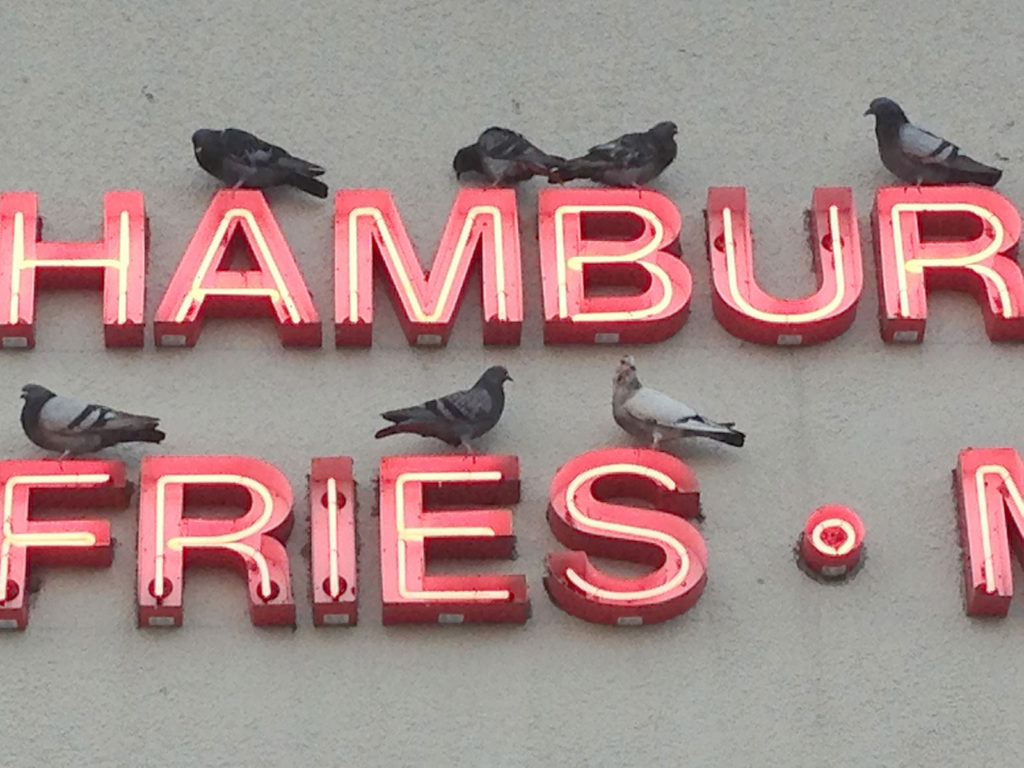Bird Control
Removal, Deterrant and Control Solutions
As a local business, we’re familiar with bird species that are common to the NH and ME Seacoast and Lakes regions, and we know which steps to take to ensure that they stay away from a property whether it is commercial space or residential.
We proudly use Bird Barrier® – America’s leading manufacturer and supplier of pest bird control solutions.
We specialize in urban bird control to remove pest birds humanely and effectively. By offering effective bird control, we hope to assure that birds can’t cause damage to your home and/or business.
Damage Caused by Birds
Pest birds cause tens of millions of dollars of damage every year to American buildings, machinery, automobiles, roofs, ventilation systems and much more. Bird droppings and nesting materials which are allowed to accumulate pose a host of physical problems which can become very serious if they are not corrected immediately.
Damage to Roofs by Droppings
Bird droppings are very acidic in nature. They actually eat away at many substrates, especially tar-based roofing materials. Droppings which are allowed to accumulate on roofs will eat into the material and eventually cause leaks. The life expectancy of a warehouse roof can be cut in half by just a light, but continuous, application of bird droppings. The accumulation of pigeon droppings caused a gas station canopy to collapse in Arizona in 2008.
Bird Damage to Roofs by Nests
Pigeon, starling and sparrow nests are often built in rain gutters, drains and corners of roofs where drains are located. Several warehouses every year experience great damage, even collapsed roofs, when drainage systems are blocked and standing water is allowed to rise just six inches. A collapsed roof that resulted in death or great physical damage could put a company out of business.
Bird Damage to Machinery
Acidic bird droppings can do great damage to air conditioning equipment, industrial machinery, siding, insulation etc. Not only is the equipment being damaged, but workers are exposed to a dangerous health-risk any time they work on or around the machinery.
Fires Started by Bird Nests
Nesting materials are usually very flammable due to their construction of straw, twigs and dried droppings. When birds build their nests inside electric signs or other machinery there is a great risk of fire. Electric sign companies blame bird nests for most of their sign fires.
Ventilation Systems Blocked by Bird Nests
Bird nests built in chimneys and ventilation systems can not only spread diseases through the system, but can actually block air-flow which can have horrible consequences. A family of five in Cleveland was killed by carbon monoxide poisoning just before Christmas 1995 because the exhaust system of their fireplace was blocked by bird nests.
Automobile Finishes Damaged by Bird Droppings
Most bird droppings, but especially pigeon and gull, will fade paint finishes by actually eating into the protective coating and the paint itself. The longer the droppings are allowed to sit on the paint, the more damage it will do.
Damage to Food and Other Products by Bird Droppings
Birds flying around the insides of warehouses, airplane hangars, factories and convention centers can wreak havoc. Bird droppings can ruin plastics when they are being molded, they can destroy any number of different chemicals and liquids which are being manufactured, they will ruin new and old paint jobs on aircraft, and they can contaminate food which is being made or packaged. These types of ruined products often cost millions of dollars in waste.
Droppings and nesting materials on or around a building send a message to the public that this building is not properly maintained. One is forced to wonder how clean a restaurant’s kitchen could be if they don’t even care about bird droppings dripping down the sign.
Collapsed Ceilings
Pigeons have been know to enter attics of houses, apartments, restaurants and other buildings through openings that have been either broken or never sealed off in the first place. In most cases the pigeons set up homes in these protected areas, build nests and discard their bodily waste. Often the weight of the droppings becomes so great that the actual ceiling collapses. One would guess that this type of occurrence would be extremely random, but it happens with alarming frequency.
Birds and Disease
Diseases Carried by Birds
The general public’s affection toward birds translates into a serious underestimation of the health risks associated with pest birds. People who would never tolerate a colony of rats living in their attic will turn a blind eye towards pigeons entrenched in the rafters of their roof. Yet, in terms of disease and damage, the two pests are quite similar. In order to better understand how nuisance birds spread disease, we need to understand the basics of disease and transmission.
What is a Disease?
When normal body functions become disrupted due to a foreign invader or an internal malfunction, we call the disruption a disease. Diseases caused by foreign invaders are called infectious diseases. The invading agents that account for the majority of infectious diseases are grouped in the following five categories; viruses, bacteria, mycotic (fungal), protozoal and rickettsial. From a layman’s standpoint, the classification and definitions of disease are less important than how these diseases spread and how can we protect ourselves from them. Diseases need to be transported from place to place in order to spread. Birds are a perfect mechanism for spreading disease because they travel great distances, harbor over forty types of parasites and can host internally over sixty types of infectious diseases.
Fortunately, human interaction with most bird species is minimal, thus drastically reducing any health threat from most birds. However a few bird species have successfully adapted to our urban environment. The pigeon, starling and house sparrow has learned to thrive living in our building and eating our food. Their adaptation to our communities has brought them into close proximity to humans. These three non-native birds have become a major nuisance in our cities and they pose a serious health risk.
How Pest Birds, Harbor and Spread Disease
The five types of infectious agents listed above can be associated with birds in the following ways: the disease lives in the bird and is passed on when the bird defecates; the disease lives in the birds surrounding environment and is spread by the birds lifestyle; the disease lives inside a parasite that the bird harbors. From understanding how the bird harbors diseases we can demonstrate the four ways the diseases are passed by the bird to humans.
Food & Water Contaminated with Bird Feces
The most obvious example is when the diseased bird directly defecates into a human food or water source. In the summer of 93, New York faced a health crisis when several hundred people came down with a mysterious ailment. The illness was traced to sea gull droppings in an old city reservoir. Health inspectors are quick to shut down a food processing plant if nuisance birds are found inside. Besides direct contamination, airborne spores from drying feces in air ducts and vents can settle on exposed food and transfer disease. Several thousand cases of food poisoning (Salmonella) every year attribute to this disease transmission route.
Inhalation of Fecal Dust from Bird Droppings
As bird feces and/or the contaminated soil, it rests on, dries or are disturbed, microscopic pieces break off and become airborne. These airborne particles can contain dormant fungi and/or bacteria. When breathed into the lungs, the warm, moist environment of the lung lining provides a breeding ground for the infectious agents. Common symptoms of this type of infection are flu like in nature: coughing, elevated temperature, restricted breathing and general body fatigue, and last roughly two to four days. The vast majority of the time, the bodies defenses will contain the invaders even before minor symptoms appear but in a small percentage of cases, major infection causing long term disability and even death occurs. It is worth noting that there is no known medical cure for internal fungal infections. After the Northridge earthquake, several thousand people came down with flu like respiratory symptoms. The ailment was called Valley Fever and was caused by people breathing in dust and airborne debris filled with histoplasmosis spores and related fungal agents stirred up by the earthquake.
Direct Contact with Bird Feces
Infection occurs when a worker or resident gets fecal dust or droppings in an open wound or cut. This commonly occurs when handling old rusty, sharp porcupine wire ledge products which are covered with bird feces. The wound site becomes red, puffy and puss-filled. Antibiotics are often needed to cure the infection. In some rare cases, infection of the blood (Septis) or internal infection can also occur causing serious illness or death. Proper attire and care must always be used when cleaning a bird site or installing bird control products. If a cut or injury occurs, thoroughly wash and disinfect the wound and cover with a sterile bandage to minimize risk of infection.
Parasites Associated with Birds
Pest birds harbor ticks, fleas, mites and other ectoparasites. Parasites transfer disease in the following manner. The parasite bites an infected animal and sucks in blood containing the germ. When the bug bites its next victim it passes along the germ to the new victim. This occurs because parasites inject some of their saliva into the host when feeding. Over forty types of parasites live either on the birds, in their nests or in the places they roost. They are responsible for the transmission of several hundred viral and bacterial agents. These diseases include plague, encephalitis, pox and meningitis. Control of these parasites is a crucial phase of the bird control project. Paradoxically, this threat can be aggravated when bird control products are installed. Unless the parasites are exterminated when the birds are excluded from a site, the mites, fleas, ticks etc. will seek a new host, often the human inhabitants. Therefore, a proper bird control project will always include parasite extermination.
How to Handle Pest Birds Problems From A Health Perspective
Using our understanding of how nuisance birds play a role in disease transmission, we can develop a few guidelines when dealing with bird infestations.
First and foremost, bird infestations are to be taken seriously but not irrationally. When evaluating a health risk potential look for the following: droppings or nesting materials inside air vents, birds around food or beverage production facilities, or large amounts of droppings in enclosed areas. These are the types of situations where disease can be spread. Remember, pigeons walking around your park bench is not cause for panic, while twenty birds living in the roof-top air ducts of a restaurant is a serious health concern requiring action.
Second, pest control professionals and do-it yourselfers must take the proper precautions when tackling bird control projects. Respirators, goggles and protective clothing must be used when cleaning up bird sites, particularly enclosed areas out of the sun with large amounts of droppings and nesting material (please see our separate information sheet on protective safety equipment).
Finally, it is not enough to remove the birds, it is crucial to exterminate all the ectoparasites and thoroughly disinfect the site. Please refer to our page on bird waste cleanup for more information.

